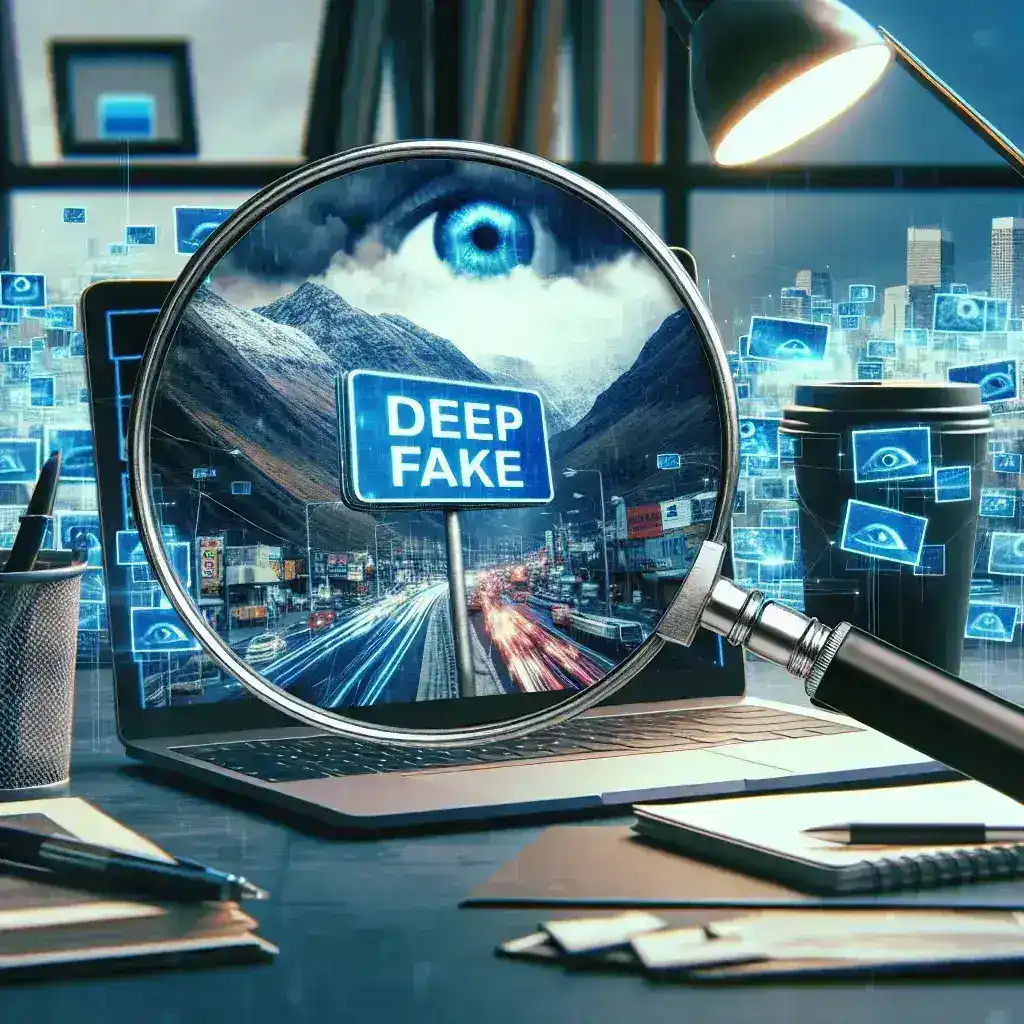Introduction
In today’s digital landscape, the rise of deepfake technology has opened new doors for creativity, but it also poses significant challenges, particularly in the realm of advertising. As the ability to create hyper-realistic manipulated videos becomes more accessible, concerns about misinformation and consumer trust are escalating. In response, regulatory bodies and industry leaders are starting to mandate deepfake detection tools in digital ad campaigns. This article will explore the implications of this mandate, its historical context, future predictions, pros and cons, and how it will shape the future of digital marketing.
The Rise of Deepfake Technology
Deepfake technology, which utilizes artificial intelligence to create realistic synthetic media, first gained notoriety around 2017. Initially, it was used primarily for entertainment purposes, such as creating realistic impersonations of public figures in videos. However, as the technology evolved, its potential for misuse became apparent. From spreading disinformation to damaging reputations, deepfakes pose a serious risk, particularly in political and advertising contexts.
The Need for Detection Tools
With the proliferation of deepfakes, the need for effective detection tools has become critical. The digital advertising industry, which relies heavily on trust and authenticity, is particularly vulnerable to the dangers posed by deepfake technology. Advertisers must ensure that the content they produce and distribute is genuine and not misleading. This necessity has led to the recent mandates for deepfake detection tools in digital ad campaigns.
Historical Context: The Evolution of Advertising Standards
The advertising industry has a long history of evolving standards aimed at protecting consumers. From truth-in-advertising laws established in the mid-20th century to the implementation of digital advertising guidelines in recent years, regulators have continually adapted to new challenges. The emergence of deepfake technology represents the latest hurdle in this ongoing effort. As advertising increasingly shifts to digital platforms, the need for stringent standards to ensure content integrity has never been more apparent.
Recent Developments
In 2023, several countries began implementing regulations requiring advertisers to incorporate deepfake detection tools into their campaigns. These regulations aim to promote transparency and protect consumers from deceptive practices. As political campaigns and product endorsements increasingly utilize manipulated media, these measures are seen as crucial to maintaining trust in advertising.
Future Predictions: The Impact of Mandated Detection Tools
As the industry adapts to the new regulatory landscape, several predictions can be made about the future of digital advertising:
- Enhanced Transparency: With mandated detection tools, consumers can expect greater transparency in advertising. Brands will need to demonstrate that their content is authentic, potentially rebuilding trust with skeptical audiences.
- New Opportunities for Innovation: The necessity of detection tools may spur innovation in both advertising and technology sectors. As companies develop and refine these tools, new business opportunities will arise.
- Increased Accountability: Brands will bear the responsibility of ensuring their ads are free from deepfakes. This accountability may lead to a stricter vetting process for advertising content.
Pros and Cons of Mandating Deepfake Detection Tools
Pros
- Consumer Protection: Mandating detection tools protects consumers from misleading and potentially harmful content.
- Brand Integrity: Brands that adhere to these regulations can enhance their reputation by demonstrating a commitment to honesty and authenticity.
- Regulatory Compliance: Companies that comply with mandated tools can avoid legal ramifications and potential fines.
Cons
- Implementation Costs: Integrating deepfake detection tools can be costly for small businesses and startups, potentially creating barriers to entry in the market.
- False Positives: Detection tools are not foolproof and may produce false positives, wrongly labeling legitimate content as deepfakes.
- Innovation Stifling: Overregulation could stifle creativity in advertising, limiting the types of content brands can produce.
Real-World Examples
Several brands and campaigns have already begun to adapt to these new regulations. A notable example is a recent political campaign in the United States that utilized deepfake detection technology to ensure their advertisements were authentic. By proactively addressing concerns about misinformation, the campaign aimed to reinforce trust with voters.
Expert Opinions
Industry experts have weighed in on the implications of mandating deepfake detection tools. Dr. Emily Carter, a leading researcher in digital media ethics, states, “The introduction of detection tools is a necessary step in combating misinformation in advertising. As technology evolves, so must our approach to ensuring authenticity.”
Cultural Relevance and Public Perception
The cultural impact of deepfake technology cannot be understated. From viral videos to social media challenges, deepfakes have captured the public’s imagination. However, as awareness of their potential for harm grows, public perception is shifting. Consumers are becoming more cautious about the media they consume, which has created a demand for transparency in advertising.
A Step-by-Step Guide to Implementing Detection Tools
For advertisers looking to comply with the new regulations, here’s a step-by-step guide:
- Research Available Tools: Investigate the various deepfake detection tools available in the market, considering factors such as cost, effectiveness, and user-friendliness.
- Develop a Strategy: Create a comprehensive plan for integrating detection tools into your advertising workflow.
- Train Your Team: Ensure your team is equipped with the necessary knowledge and skills to effectively use these tools.
- Monitor and Adjust: Continuously monitor the effectiveness of your detection tools and make adjustments as needed.
Conclusion
As deepfake technology continues to evolve, so must the advertising industry’s approach to maintaining trust and authenticity. The mandate for deepfake detection tools represents a significant step forward in safeguarding consumers and ensuring brand integrity. While challenges remain, the future of digital advertising looks promising, with the potential for greater transparency and accountability. By embracing these changes, advertisers can not only comply with regulations but also foster a more trustworthy environment for consumers.





Leave a Reply